Telerik Backend Services
You'll find it empowering ..

So, you're building a modern app
Mobile / Web / Desktop
Problems you face ..
-
How do you manage & scale Data?
-
Is your data Platform-agnostic?
-
Relational Vs Non-Relational data storage?
-
Do you have consistent APIs on top of your data?
-
How do you handle Users & Authentication?
-
Do you need scalable code running in the cloud?
-
X-Platform Mobile Push Notifications a distant dream?
-
Legacy data holding you back?
Debilitating concerns .. we know
Backend plumbing - done right!

Why Telerik Backend Services?
Complete Backend-as-a-Service (BaaS) offering
One portal to rule it all
Secure Data storage - relational or non-relational
Consistent APIs & Cloud code
Social User authentication & Management
Easy X-Platform Mobile Push Notifications
Easy Data Connectors to On-premise data
X-Platform SDKs and extensive product Integrations








That's a lot of features ..
No worries - let's break it down
Where do I start?
Simply head to
https://platform.telerik.com/
Sign in & Create an App ..
Then, start a Backend Services project

And just like that ..
Your Backend Services Dashboard is ready

See that API Key?
It's important and unique to your Backend
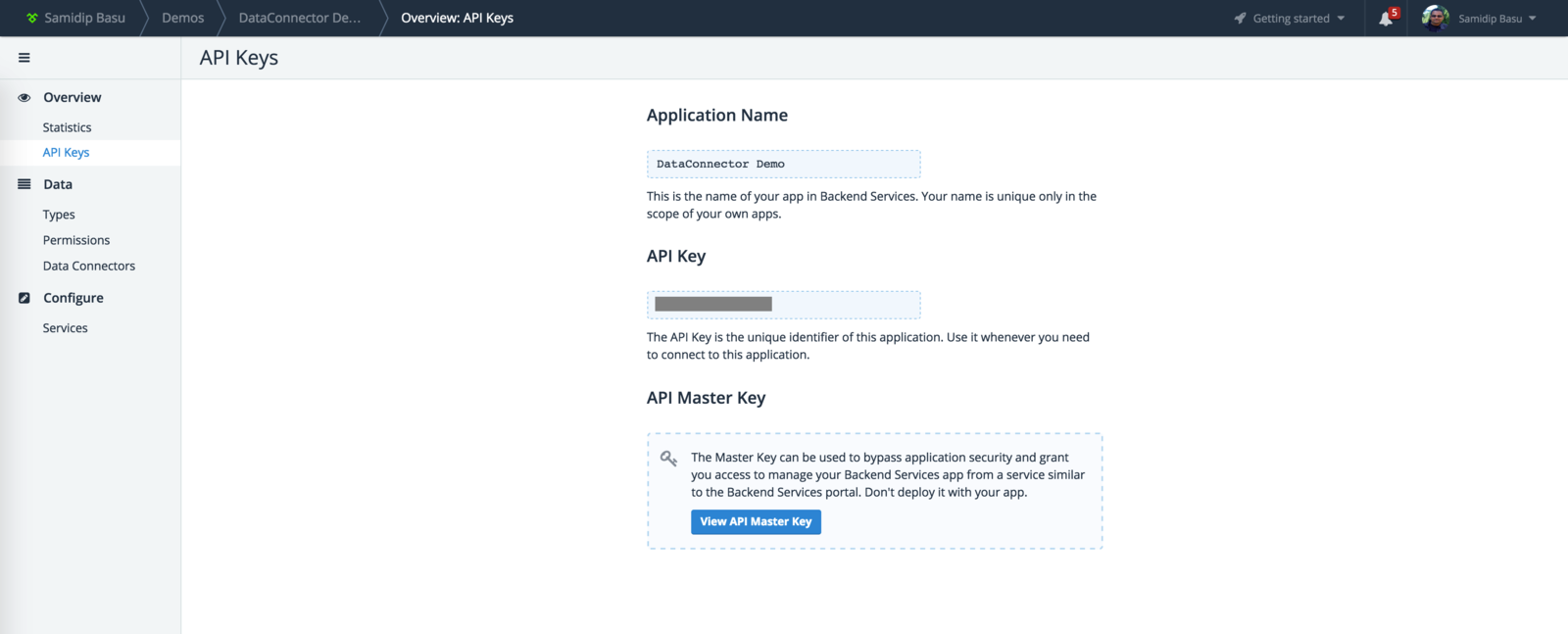
#1. Let's talk SDKs
-
JavaScript SDK
-
.NET SDK
-
iOS SDK
-
Android SDK
-
Cloud Code
You get wrappers .. over a consistent REST API

That's pretty much everything ..
Yup, that's the goal
Native SDKs make it easy to work with Backend Services REST API
Makes for smooth Integrations
Any App, Any Platform
#2. Let's talk about Data
-
Can't be local in devices only
-
Users will want to roam between platforms/devices
-
Data types - Relational & Non-relational
-
Data needs exposed through clean APIs
-
Security & Scalability concerns

Telerik Backend Services
Complete, Fast & Robust
Mobile Backend as a Service
Your data however you want it
Scalable BaaS in the cloud
Backend Content Types
Like a Table in a Relational Database
Only in the cloud & accessible
Content has Fields that describe the Data
Like column schema in a Table
Backend Content Fields

Oh, and Content can be Related .. like Table relationships
Creating Content
There are some default Fields .. you set up the rest

Manage your Content
All Content Types & Data - accessible through portal

#3. Your Data, Our APIs
Best part about Backend Content = Easy APIs
REST API created auto-magically on top of Content
No need to write your own Services/APIs
REST API for any app, any platform

Let's manage Data
Yes, you can do plain RESTful service calls
But SDKs make the integrations so much easier
Seamless CRUD operations!
I see EverLive
Internal name for Backend Services
Used in namespaces & SDKs
Entry point into Backend Services SDK is through ..
The Everlive class
You normally create one global instance of 'Everlive'
Needs your Backend API Key
Here's how you start
var el = new Everlive('your-api-key-here');.NET SDK
JavaScript SDK
EverliveApp myApp = new EverliveApp("your-api-key-here");Read data from Backend
.NET code, granted you have a content called 'Activity'
public async Task GetSingleItem(EverliveApp app, Guid activityId)
{
var activity = await app.WorkWith().Data<Activity>().GetById(activityId)
.ExecuteAsync();
Debug.WriteLine("Activity: " + activity.Text);
}
public async Task GetMultipleItems(EverliveApp app)
{
var activities = await app.WorkWith().Data<Activity>().GetAll().ExecuteAsync();
foreach(var activity in activities)
{
Debug.WriteLine("Activity: " + activity.Text);
}
}Single item by Id
Multiple items
Manipulate data from Backend
.NET code, granted you have a content called 'Activity'
public async Task UpdateActivityById(EverliveApp app, Guid activityId,
Activity updatedActivity)
{
await app.WorkWith().Data<Activity>().Update(activityId, updatedActivity)
.ExecuteAsync();
}
public async Task DeleteById(EverliveApp app, Guid id)
{
await app.WorkWith().Data<Activity>().Delete(id).ExecuteAsync();
}Update
Delete
#4. Let's talk Data Connectors
We know you have existing data
Variety of DB providers = disparate content
Painful Service layers to expose data
It's time to bridge your On-premise data
You'll love this

Data Connector flexibility

Set your on-premises data free ..
How does it work?
You download & install an IIS app ..
It's the Data Link Server
Simply point to your on-premise Data storage
You create Mapped Content
Your data stays in house .. uses Backend API
Free REST API over your data!
Don't code, just Configure!
Simply make your Data Link Server accessible
And use Connection String to point to your data ..
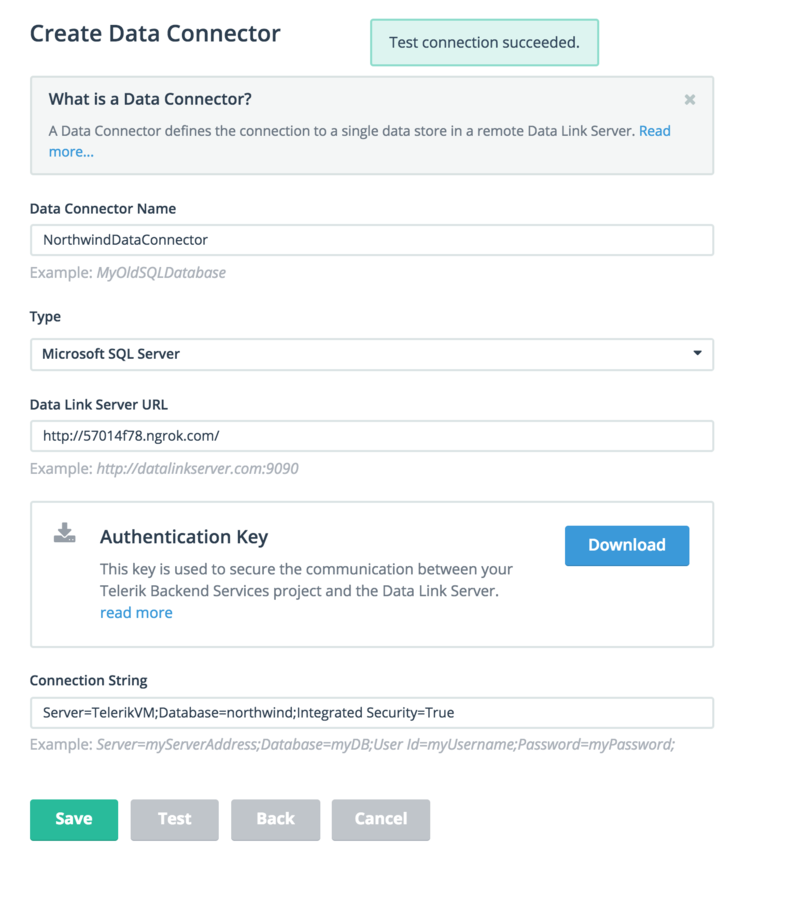
#5. Got Non-Relational data?
Yep, Backend Services allows you deal with Files
Think of it as Blob storage in the Cloud
And it's super scalable
Same RESTful API for your Files

Backend portal helps manage Files

Users can take pictures & upload to Backend
2 lines of code for developers from any SDK
File delivery powered by global CDNs .. it's free!
#6. Let's talk User Management
Traditionally, bothersome for developers ..
User authentication/authorization = Tricky
Account management = Security concerns
Backend Services to the rescue

User Management - Elevated
-
New user registration
-
Automatic email flow for newly-registered accounts
-
Fine-grained control over User accounts
-
User Password management flows
-
User authentication through OAuth providers (Facebook, Google+, Live Connect, Twitter)
-
User authentication through Active Directory Federation Services (AD FS) authentication provider
-
Account deletion
User Management in the Cloud
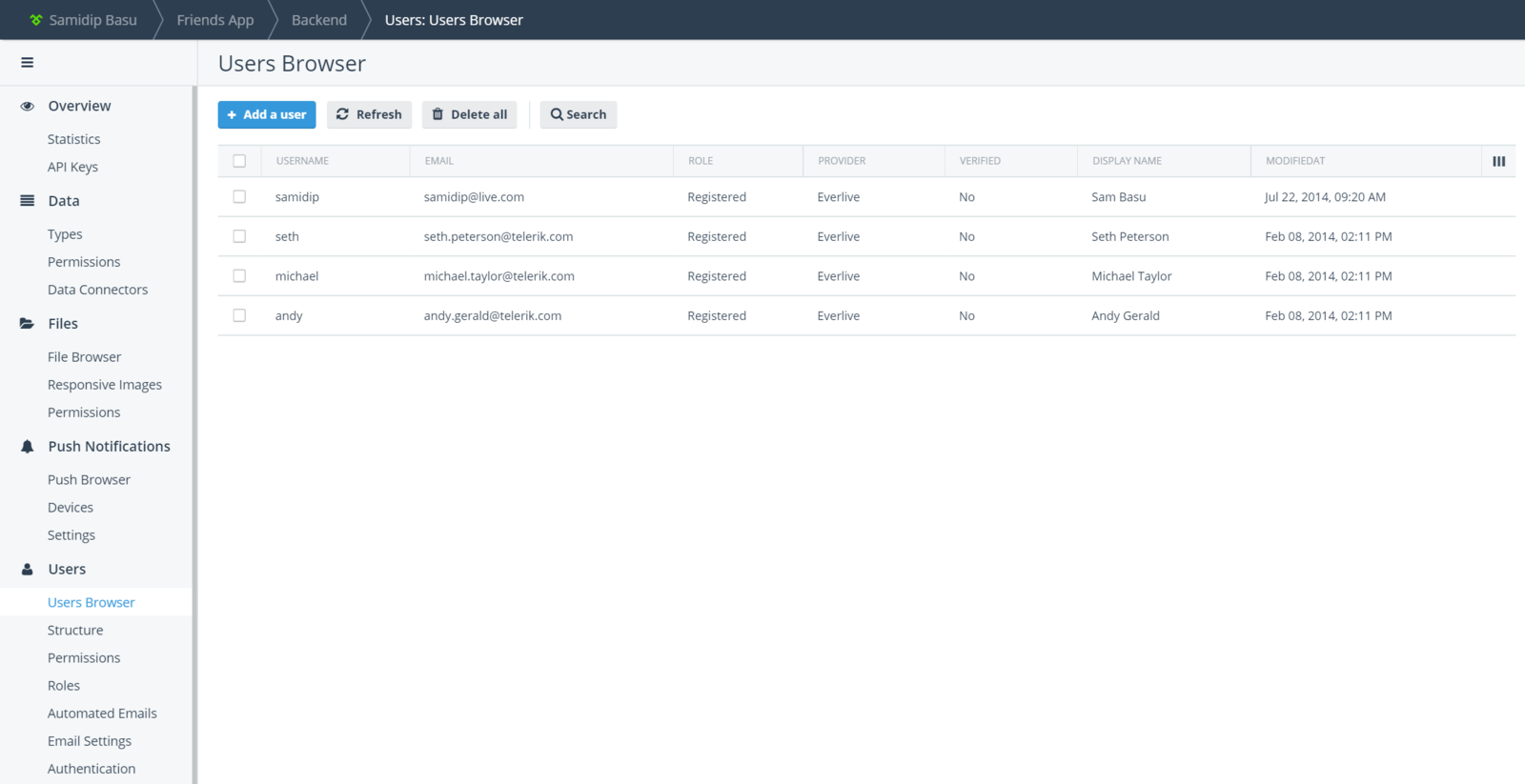
Automated Email Templates .. everything on portal
#7. Let's talk Push Notifications
Push Notifications are a great way to engage users
Present on every Mobile platform
Captures user attention even when app not running
It should be a no-brainer, right?

Push Notifications are actually hard!
Configuring Push Notifications is tough for developers
Every Mobile platform does it differently
Apple, Google, Microsoft - all have own rules & setup
Backend Services is here to help
Push Notifications in Backend Services
-
Works X-Platform for iOS, Android & Windows
-
Powerful targeting to filter on devices
-
Smart grouping on users/geography
-
Works for native or hybrid mobile apps
How to work Push Notifications
-
Register device for Push from mobile app
-
Enable Push Notifications per platform
-
Build Segments for Filtering - user/device
-
Send Push Notifications from Backend
-
Push can also be triggered from REST endpoint
Device Registration for Push
All this achieved with 2 lines of code
await app.WorkWith().Push().CurrentDevice.Initialize(PushSettings).ExecuteAsync();
var result = await app.WorkWith().Push().CurrentDevice.
Register(DeviceParameters customParameters).ExecuteAsync();
var el = new Everlive('your-api-key-here');
el.push.register(
pushSettings,
function successCallback(data) {},
function errorCallback(error) {}
);.NET
JavaScript
Device list on portal
Manage registered devices .. even works on simulators
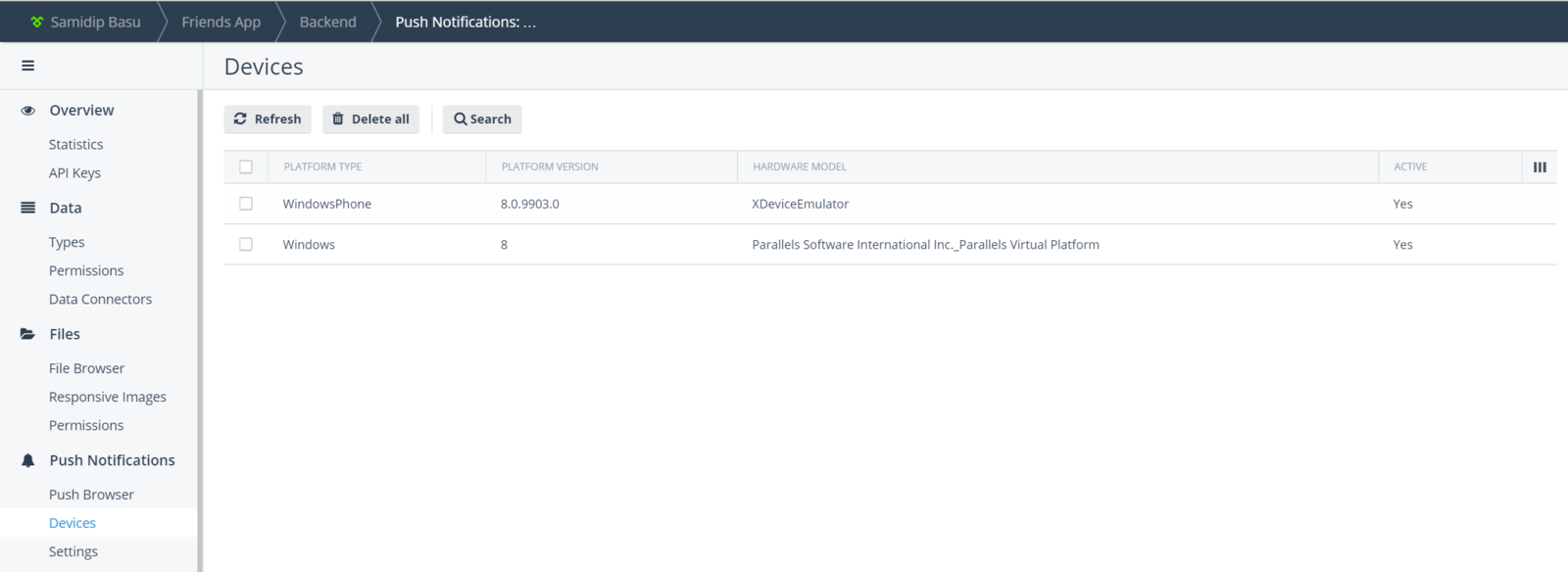
Sending Push Notifications from portal
Broadcast to all devices or be Platform specific
Payload can be tweaked for iOS/Android/Windows

Sending Push Notifications from portal
Here's an iOS specific Push Notification
Parameters in Segments allows you to filter devices
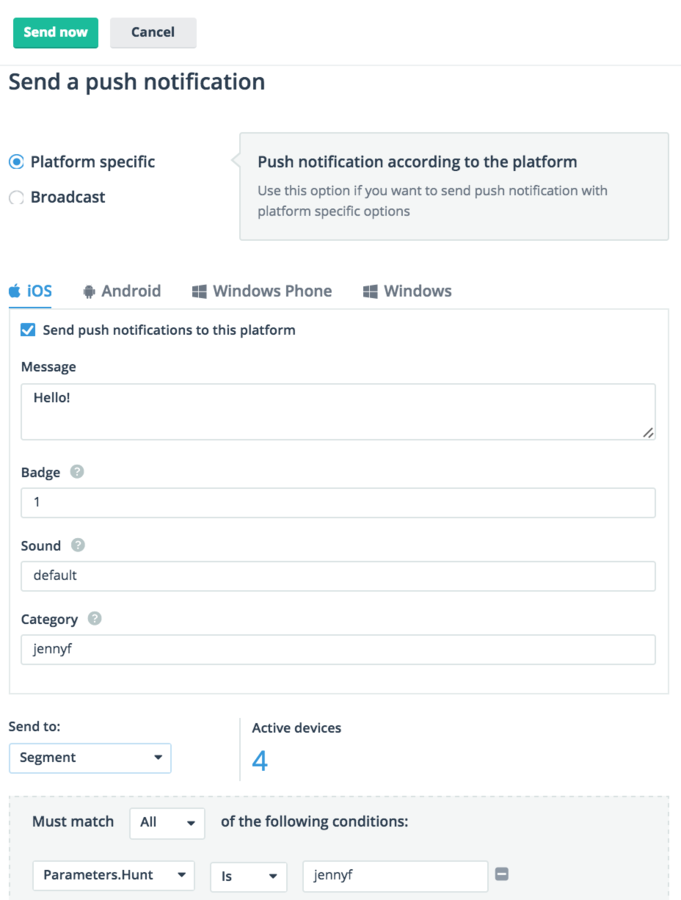
Push Notifications in action!
Works on Devices or Simulators
Can be triggered through a REST endpoint
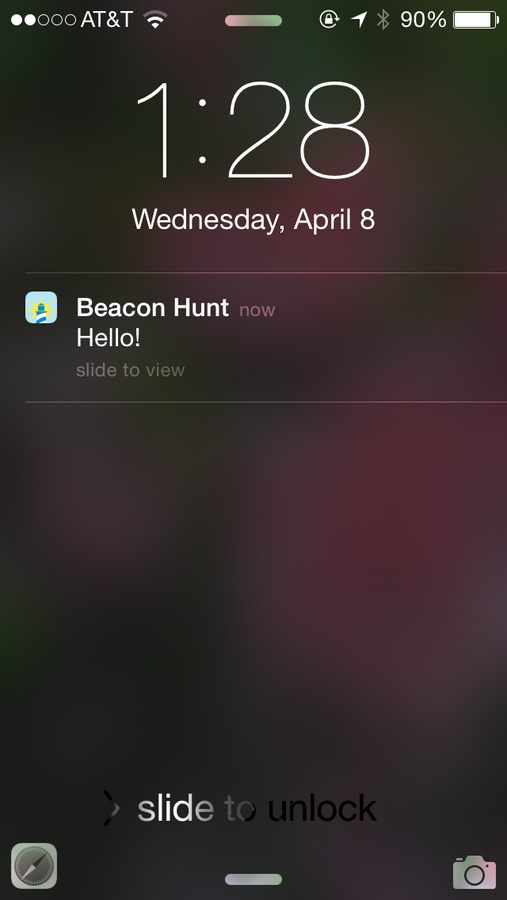
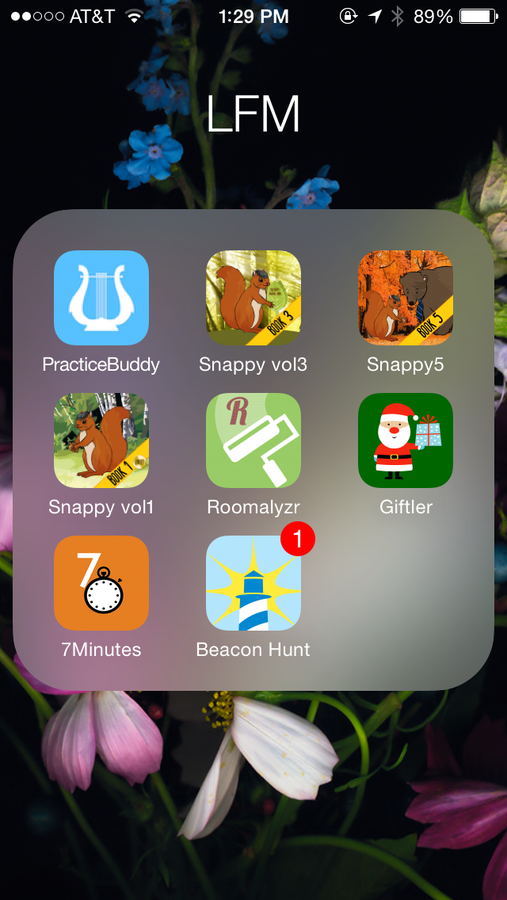
#8. Let's talk Cloud Code
For times when you need custom logic server-side
Simplicity of JavaScript
Yes, this is based on Node.js
Built-in inside Backend Services

Types of Cloud Code
Content Type Code - like DB triggers | works on content | acts before/after CRUD operations
Cloud Functions - custom JavaScript code | each function gets REST endpoint | invoke anytime
You can write Cloud Code ..
Directly in Backend or Upload custom JS file
#9. Let's talk Responsive Images
Images are selling points of many apps
Yet, ill-sized images are the biggest bandwidth hogs
Makes whole app feel sluggish
Backend Services does the heavy work

Here's why Images are important
Typical HTTP bandwidth usage
Critical to optimize in Mobile first world
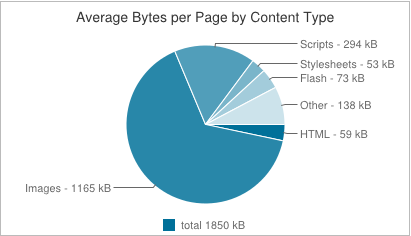
Responsive Images in Backend
-
Automatic image re-sizing on server
-
Caters to exact device form factor
-
Bandwidth & app optimization
-
Support for high DPI retina devices
-
Platform agnostic
-
Image delivery over global CDNs
-
Simple JavaScript to set up
Simply upload an Image to Backend
Works even if you are self-hosting images ..

https://bs1.cdn.telerik.com/image/v1/your-api-key-here/
resize=rezise-options-here/URI-to-image-hereURI to Responsive Image .. like magic!
Let's Recap
Feeling empowered?
That's a lot of features ...
Everything you need from a
Modern, Robust, Scalable Backend
Telerik Backend Services
-
Relational or Non-relational data in the cloud
-
Automatic REST API on top of data
-
Data Connectors for On-premise data
-
Wrapper SDKs for any app on any platform
-
Robust User Management
-
Easy X-Platform Push Notifications
-
Cloud Code for server-side logic & much more
Complete BaaS offering
Telerik Backend Services
Get started today
http://www.telerik.com/backend-services
Go build your client app .. you Backend awaits!
